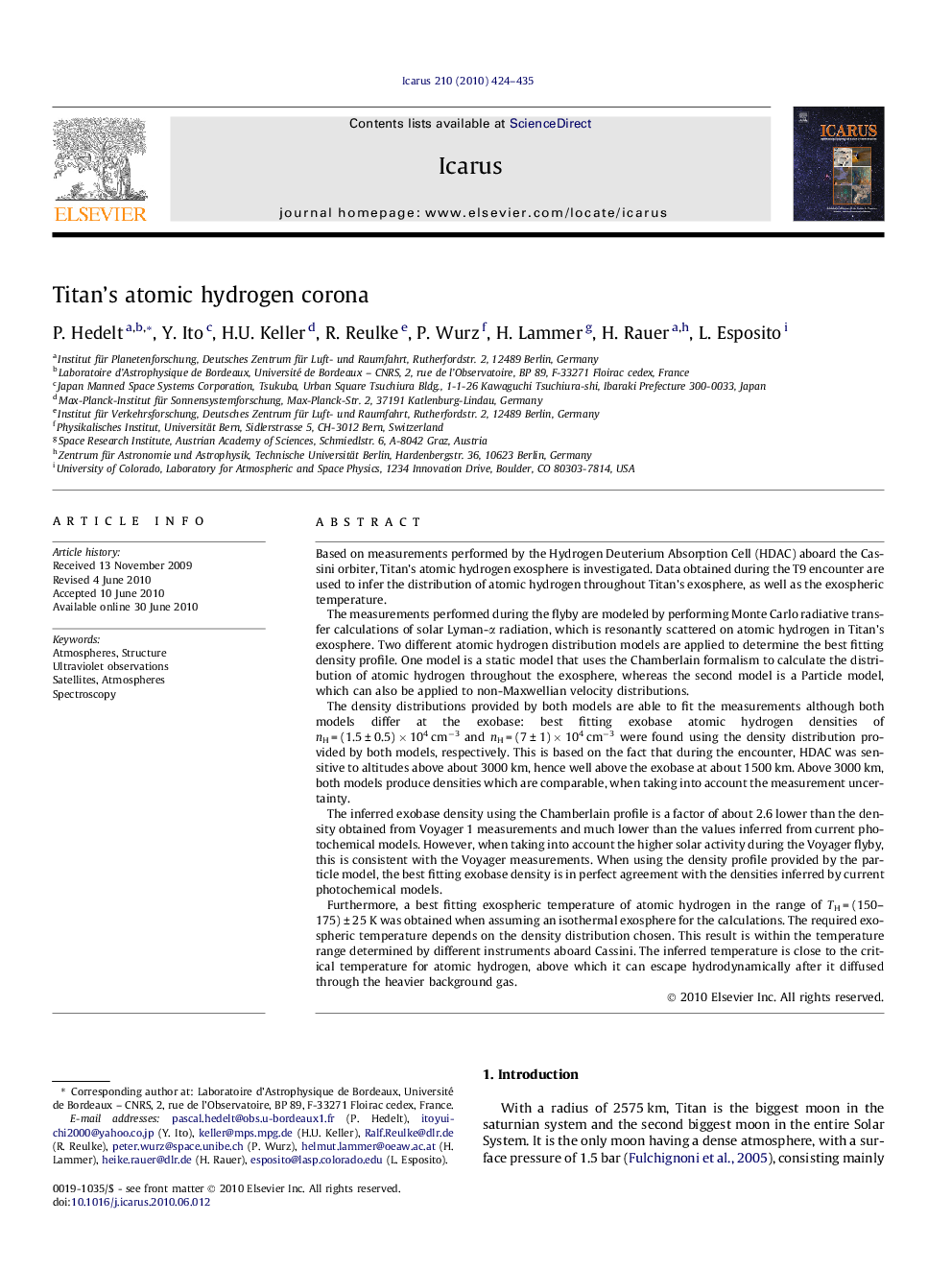| کد مقاله | کد نشریه | سال انتشار | مقاله انگلیسی | نسخه تمام متن |
|---|---|---|---|---|
| 1774168 | 1021157 | 2010 | 12 صفحه PDF | دانلود رایگان |

Based on measurements performed by the Hydrogen Deuterium Absorption Cell (HDAC) aboard the Cassini orbiter, Titan’s atomic hydrogen exosphere is investigated. Data obtained during the T9 encounter are used to infer the distribution of atomic hydrogen throughout Titan’s exosphere, as well as the exospheric temperature.The measurements performed during the flyby are modeled by performing Monte Carlo radiative transfer calculations of solar Lyman-α radiation, which is resonantly scattered on atomic hydrogen in Titan’s exosphere. Two different atomic hydrogen distribution models are applied to determine the best fitting density profile. One model is a static model that uses the Chamberlain formalism to calculate the distribution of atomic hydrogen throughout the exosphere, whereas the second model is a Particle model, which can also be applied to non-Maxwellian velocity distributions.The density distributions provided by both models are able to fit the measurements although both models differ at the exobase: best fitting exobase atomic hydrogen densities of nH = (1.5 ± 0.5) × 104 cm−3 and nH = (7 ± 1) × 104 cm−3 were found using the density distribution provided by both models, respectively. This is based on the fact that during the encounter, HDAC was sensitive to altitudes above about 3000 km, hence well above the exobase at about 1500 km. Above 3000 km, both models produce densities which are comparable, when taking into account the measurement uncertainty.The inferred exobase density using the Chamberlain profile is a factor of about 2.6 lower than the density obtained from Voyager 1 measurements and much lower than the values inferred from current photochemical models. However, when taking into account the higher solar activity during the Voyager flyby, this is consistent with the Voyager measurements. When using the density profile provided by the particle model, the best fitting exobase density is in perfect agreement with the densities inferred by current photochemical models.Furthermore, a best fitting exospheric temperature of atomic hydrogen in the range of TH = (150–175) ± 25 K was obtained when assuming an isothermal exosphere for the calculations. The required exospheric temperature depends on the density distribution chosen. This result is within the temperature range determined by different instruments aboard Cassini. The inferred temperature is close to the critical temperature for atomic hydrogen, above which it can escape hydrodynamically after it diffused through the heavier background gas.
Journal: Icarus - Volume 210, Issue 1, November 2010, Pages 424–435